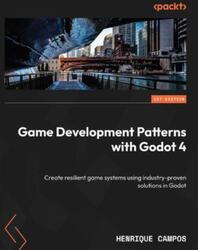Thoroughly revised to cover all the 100+ significant updates to Java Developers Kit (JDK) 1.5, Java Network Programming is a complete introduction to developing network programs (both applets and applications) using Java, covering everything from networking fundamentals to remote method invocation (RMI). It includes chapters on TCP and UDP sockets, multicasting protocol and content handlers, servlets, and the new I/O API. This is the essential resource for any serious Java developer.

Copyright
Preface
About the Third Edition
Organization of the Book
Who You Are
Java Versions
About the Examples
Conventions Used in This Book
Request for Comments
Comments and Questions
Acknowledgments
Chapter 1. Why Networked Java?
Section 1.1. What Can a Network Program Do?
Section 1.2. Security
Section 1.3. But Wait! There's More!
Chapter 2. Basic Network Concepts
Section 2.1. Networks
Section 2.2. The Layers of a Network
Section 2.3. IP, TCP, and UDP
Section 2.4. The Internet
Section 2.5. The Client/Server Model
Section 2.6. Internet Standards
Chapter 3. Basic Web Concepts
Section 3.1. URIs
Section 3.2. HTML, SGML, and XML
Section 3.3. HTTP
Section 3.4. MIME Media Types
Section 3.5. Server-Side Programs
Chapter 4. Streams
Section 4.1. Output Streams
Section 4.2. Input Streams
Section 4.3. Filter Streams
Section 4.4. Readers and Writers
Chapter 5. Threads
Section 5.1. Running Threads
Section 5.2. Returning Information from a Thread
Section 5.3. Synchronization
Section 5.4. Deadlock
Section 5.5. Thread Scheduling
Section 5.6. Thread Pools
Chapter 6. Looking Up Internet Addresses
Section 6.1. The InetAddress Class
Section 6.2. Inet4Address and Inet6Address
Section 6.3. The NetworkInterface Class
Section 6.4. Some Useful Programs
Chapter 7. URLs and URIs
Section 7.1. The URL Class
Section 7.2. The URLEncoder and URLDecoder Classes
Section 7.3. The URI Class
Section 7.4. Proxies
Section 7.5. Communicating with Server-Side Programs Through GET
Section 7.6. Accessing Password-Protected Sites
Chapter 8. HTML in Swing
Section 8.1. HTML on Components
Section 8.2. JEditorPane
Section 8.3. Parsing HTML
Section 8.4. Cookies
Chapter 9. Sockets for Clients
Section 9.1. Socket Basics
Section 9.2. Investigating Protocols with Telnet
Section 9.3. The Socket Class
Section 9.4. Socket Exceptions
Section 9.5. Socket Addresses
Section 9.6. Examples
Chapter 10. Sockets for Servers
Section 10.1. The ServerSocket Class
Section 10.2. Some Useful Servers
Chapter 11. Secure Sockets
Section 11.1. Secure Communications
Section 11.2. Creating Secure Client Sockets
Section 11.3. Methods of the SSLSocket Class
Section 11.4. Creating Secure Server Sockets
Section 11.5. Methods of the SSLServerSocket Class
Chapter 12. Non-Blocking I/O
Section 12.1. An Example Client
Section 12.2. An Example Server
Section 12.3. Buffers
Section 12.4. Channels
Section 12.5. Readiness Selection
Chapter 13. UDP Datagrams and Sockets
Section 13.1. The UDP Protocol
Section 13.2. The DatagramPacket Class
Section 13.3. The DatagramSocket Class
Section 13.4. Some Useful Applications
Section 13.5. DatagramChannel
Chapter 14. Multicast Sockets
Section 14.1. What Is a Multicast Socket?
Section 14.2. Working with Multicast Sockets
Section 14.3. Two Simple Examples
Chapter 15. URLConnections
Section 15.1. Opening URLConnections
Section 15.2. Reading Data from a Server
Section 15.3. Reading the Header
Section 15.4. Configuring the Connection
Section 15.5. Configuring the Client Request HTTP Header
Section 15.6. Writing Data to a Server
Section 15.7. Content Handlers
Section 15.8. The Object Methods
Section 15.9. Security Considerations for URLConnections
Section 15.10. Guessing MIME Content Types
Section 15.11. HttpURLConnection
Section 15.12. Caches
Section 15.13. JarURLConnection
Chapter 16. Protocol Handlers
Section 16.1. What Is a Protocol Handler?
Section 16.2. The URLStreamHandler Class
Section 16.3. Writing a Protocol Handler
Section 16.4. More Protocol Handler Examples and Techniques
Section 16.5. The URLStreamHandlerFactory Interface
Chapter 17. Content Handlers
Section 17.1. What Is a Content Handler?
Section 17.2. The ContentHandler Class
Section 17.3. The ContentHandlerFactory Interface
Section 17.4. A Content Handler for the FITS Image Format
Chapter 18. Remote Method Invocation
Section 18.1. What Is Remote Method Invocation?
Section 18.2. Implementation
Section 18.3. Loading Classes at Runtime
Section 18.4. The java.rmi Package
Section 18.5. The java.rmi.registry Package
Section 18.6. The java.rmi.server Package
Chapter 19. The JavaMail API
Section 19.1. What Is the JavaMail API?
Section 19.2. Sending Email
Section 19.3. Receiving Mail
Section 19.4. Password Authentication
Section 19.5. Addresses
Section 19.6. The URLName Class
Section 19.7. The Message Class
Section 19.8. The Part Interface
Section 19.9. Multipart Messages and File Attachments
Section 19.10. MIME Messages
Section 19.11. Folders
Colophon
Index
Бесплатно скачать электронную книгу в удобном формате, смотреть и читать:
Скачать книгу Java Network Programming, 3rd Edition, Harold E.R., 2004 - fileskachat.com, быстрое и бесплатное скачивание.
Скачать chm
Ниже можно купить эту книгу, если она есть в продаже, и похожие книги по лучшей цене со скидкой с доставкой по всей России.Купить книги
Скачать книгу Java Network Programming, 3rd Edition, Harold E.R., 2004 - Яндекс Народ Диск.
Скачать книгу Java Network Programming, 3rd Edition, Harold E.R., 2004 - depositfiles.
Дата публикации:
Теги: учебник по программированию :: программирование :: Harold
Смотрите также учебники, книги и учебные материалы:
Следующие учебники и книги:
Предыдущие статьи:












